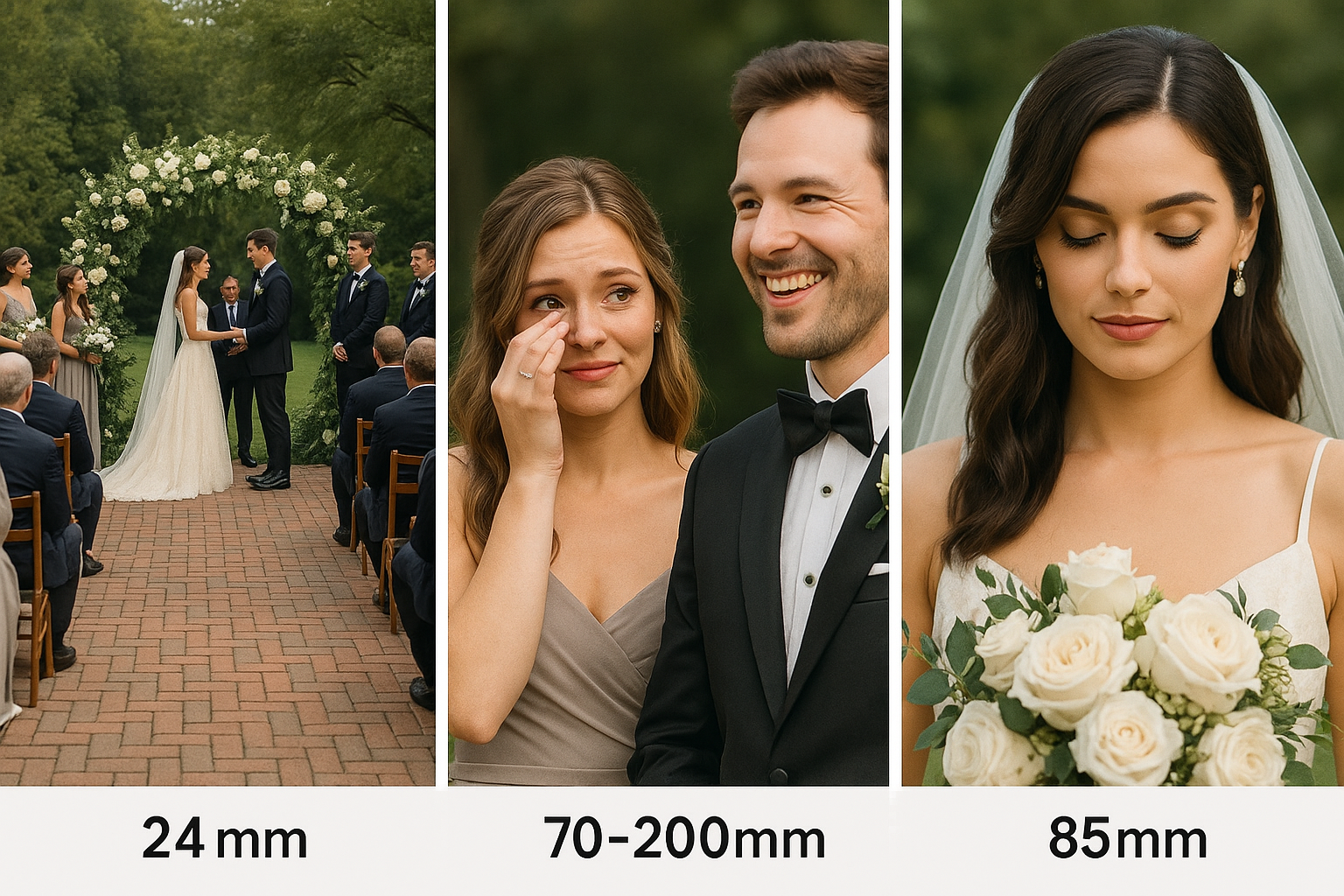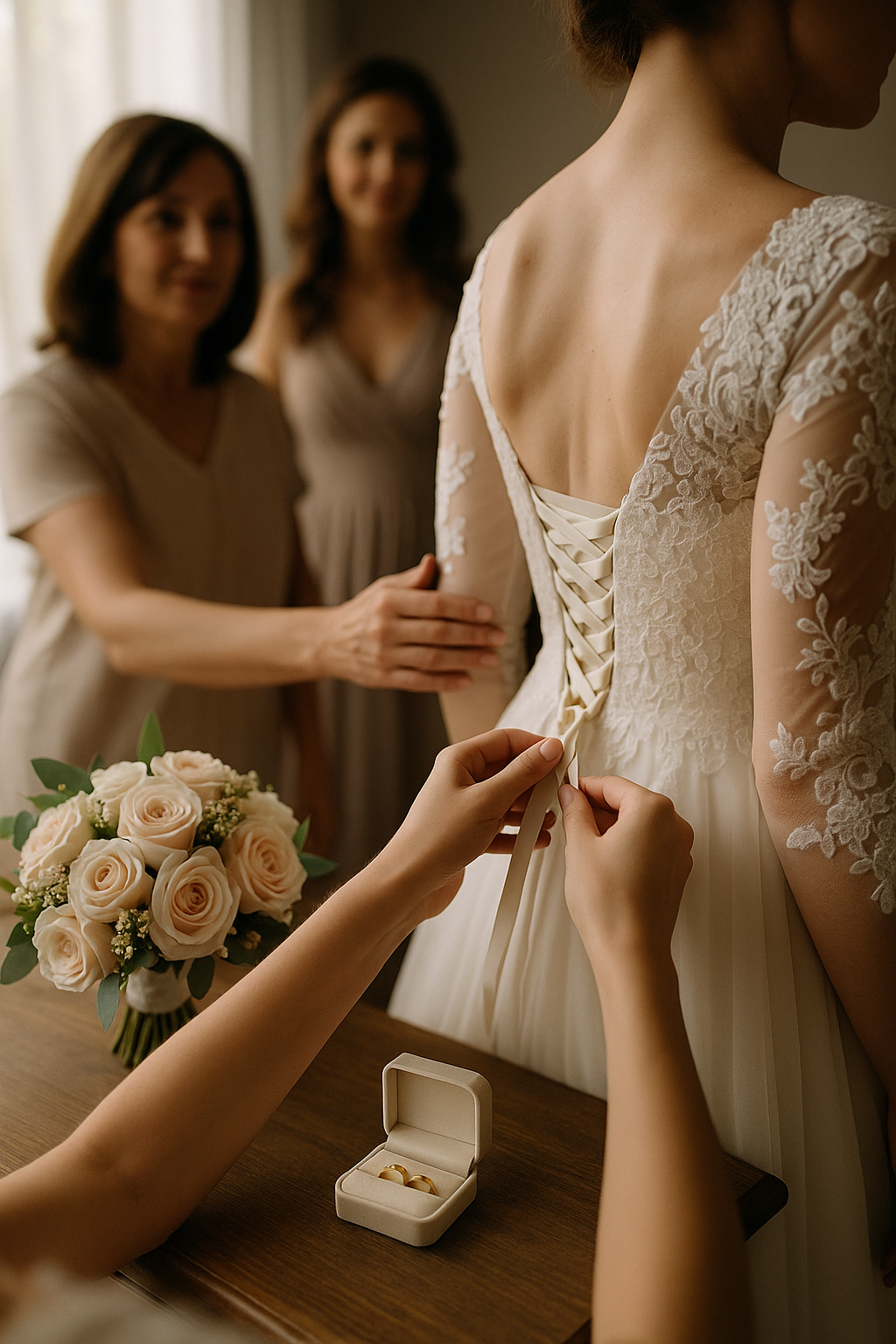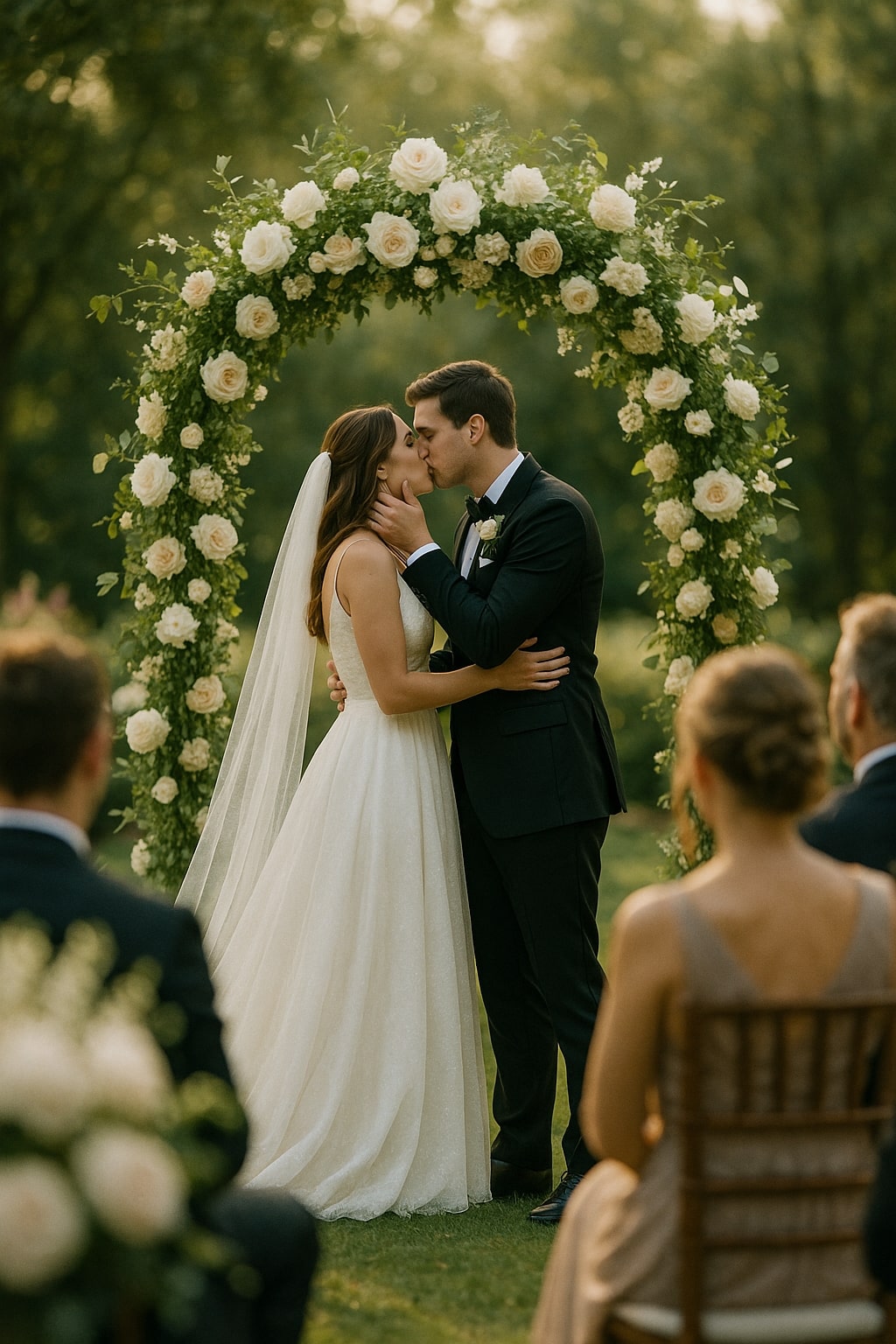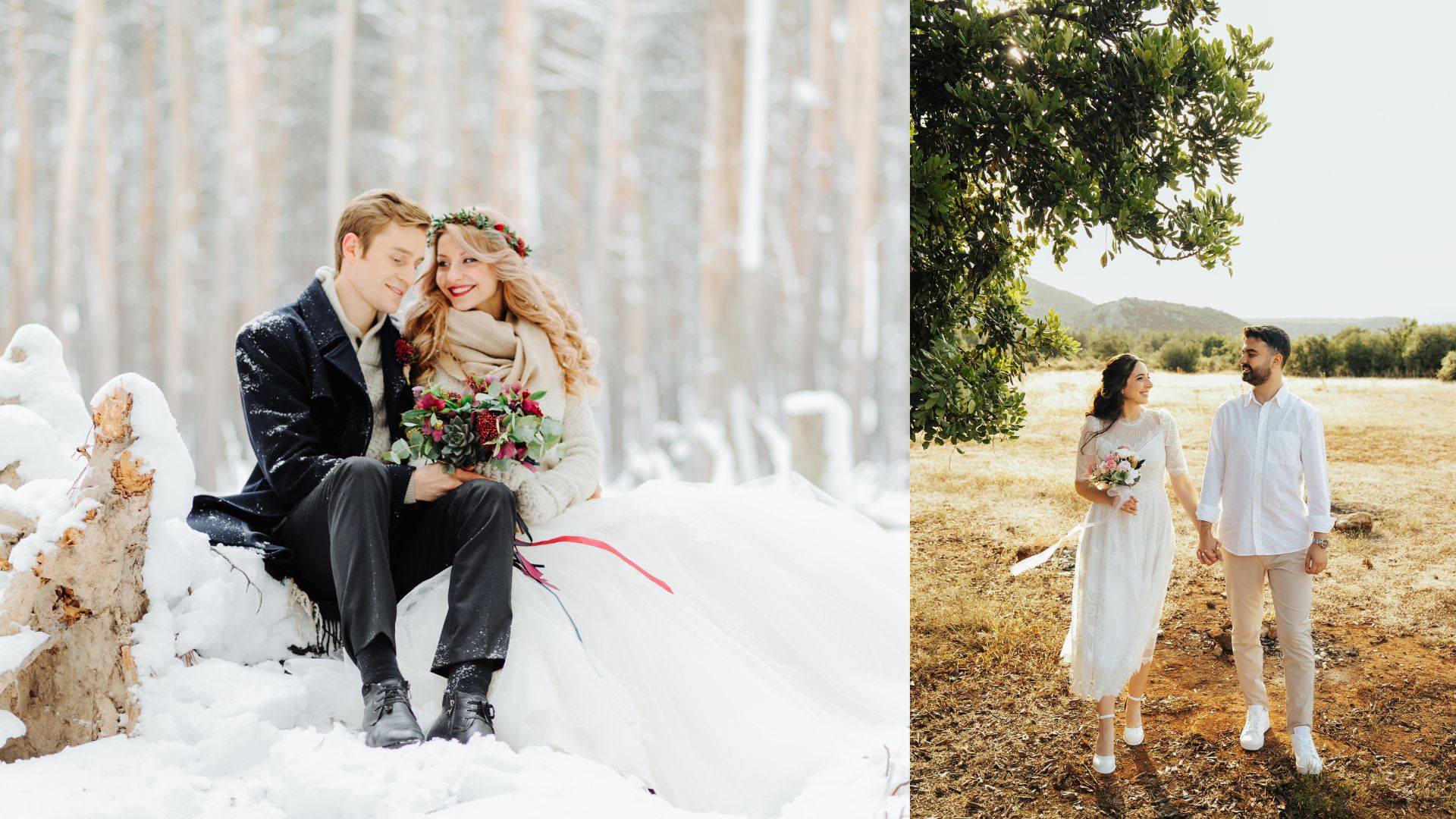Why Wedding Photography Matters for Ecommerce and Fashion Brands
Wedding photography isn't just about documenting a couple’s big day. For ecommerce and fashion brands, it’s a rich visual playground. Real weddings supply the kind of high-impact, emotionally charged content that drives engagement. Gorgeous dresses, real people, and real reactions show products in their natural habitat , not on sterile backdrops.
Consumers crave visuals that feel authentic yet aspirational. A wedding lookbook or editorial featuring actual wedding-day moments connects faster than a purely styled shoot. It has narrative. Movement. Emotion. That’s gold for conversion.
Wedding photographers also provide brands a chance to test hybrid workflows , using sharp in-camera captures, fast AI retouching, and consistent post-production pipelines. Pixofix, for example, partners with studios to maintain that editorial polish while turning around complex edits quickly. The result: imagery that feels high-touch but moves at ecommerce speed.
Essential Gear for Wedding Photography

Camera Equipment Recommendations
Your camera isn't just a tool. It's your security blanket, your passport to clarity in fast-moving scenes. For weddings, dual card slots aren’t optional , they’re your insurance policy. Go with a full-frame mirrorless or DSLR known for fast autofocus and low-light performance , the Sony A7 IV, Canon R6, or Nikon Z6 II are top contenders.
Always pack a second body. Not just for backup, but so you’re not fumbling lens swaps during once-in-a-lifetime moments. Time matters.
Choosing Lenses for Various Shots
Different moments call for different perspectives. The 24-70mm f/2.8 is the workhorse , it’ll handle prep, ceremony, and reception with crisp detail. But don’t stop there.
Use a 70-200mm for emotion-packed candids without invading the moment. For wide venue shots or editorial-style portraits, pull out a 35mm or even a 24mm. Prime lenses (like the 85mm f/1.4) are magic in portraiture, giving you that creamy background and sharp focus on the eyes.
Smart lens choice isn’t just about variety. It’s about intention , knowing how you want your story to feel.

Using Flash and Lighting Equipment
Natural light fades, but your ability to deliver shouldn’t. On-camera flash is rarely enough. Bring a portable softbox and off-camera flash setup , keep lighting directional and soft to maintain the wedding's ambient mood.
Modifiers like MagMod can make on-the-go flash more flattering and less invasive. And know how to light for convenience but edit for beauty. That’s where partners like Pixofix can step in , smoothing skin, balancing shadows, and killing color casts while keeping the story honest.
AI tools help with batch lighting corrections, but don’t chase perfection. Chase feeling.
Preparing for the Big Day
Communicate with the Couple
Get inside their vision early. Are they all about candid moments or luxury editorial vibes? Do they have family sensitivities or cultural rituals you shouldn’t miss? The more you know, the fewer surprises.
Talk about their timeline, light preferences, and must-have shots. Ask if they have a Pinterest board or past wedding gallery they love. This isn’t just prep. It’s creative alignment.
Create a Shot List and Timeline
Precision starts here. Build a tight timeline around ideal light, travel time between locations, and key events. Keep a master shot list not just for moments, but people. Miss the grandmother hug, and you’ll feel it in the review meeting.
Structure the list by moments: pre-ceremony, ceremony, group portraits, reception. Then prioritize must-haves vs. nice-to-haves. That way, if weather or time throws a curveball, you pivot instead of panic.
Scout Wedding Venues in Advance
Walk the venue before the chaos. See how natural light hits the ceremony space. Check power sources for lighting gear. Find clean backdrops for portraits , away from signage, exit signs, or clutter.
Use your scouting time to plan angles that look cinematic, not cluttered. And if you're working for a fashion or ecommerce campaign embedded in the wedding (think designer gown or jewelry features), this is where you place those hero shots.
Capturing Key Moments
Pre-Ceremony Shots
This is the calm before the story ignites. Focus on details , rings, flowers, close-ups of lacing dresses or tying ties. These moments build tension and texture.
Look for emotion in quiet gestures: a parent’s glance, a sister’s squeeze of the hand. Capture wide, medium, and tight crops to tell the full story in layers.

Ceremony Highlights
The first look. The vows. The kiss. These are non-repeatable, high-stakes moments. Use a long lens to stay unobtrusive but intimate. Watch for unguarded reactions , the teary dad, the laughing friend , they add depth beyond the obvious.
Shoot burst mode only when necessary. Anticipate rather than chase.

Reception Coverage Essentials
Receptions are where lighting shifts fast and emotions run high. First dances, speeches, the clinking of glasses , capture it all without disrupting flow.
Use off-camera lighting for consistent quality, but avoid flattening the mood. Crank ISO, shoot wide open, and embrace the grit when it serves the energy.
Think in sequences: toast reactions, cake cutting, dancefloor chaos. These micro-moments create connection.
Group and Family Portraits

Organizing Family Group Shots
This part is pure logistics with emotional stakes. Assign someone from the family to wrangle group members. You focus on composition, expression, and timing.
Start with large groups and peel layers off. Have a list. Work fast. Keep poses asymmetrical , alternating heights, angles, and gestures , to avoid that wedding photo stiffness.
Techniques for Flattering Portraits
Everything from posture to light angle matters. Position subjects at 45 degrees to the camera. Keep chins slightly forward. Use window light or soft off-camera flash to minimize shadows and enhance intimacy.
Tell people what to do. Be clear. Your calm energy sets the tone. Capture both the polished and the spontaneous. Some of the best ecommerce-style images happen when people laugh between setups , they feel real.
And when editing? Tone skin naturally. Keep fabrics true. Stay away from filters that change emotion or color accuracy. Whether retouching in-house or integrating partners like Pixofix, realism always wins.## Post-Wedding Workflow
Effective Photo Retouching Strategies
Editing wedding photos isn’t about perfection. It’s about preserving story and emotion while elevating quality. Skin should look natural. Colors should evoke the atmosphere of the day , whether it was soft and romantic or bold and modern.
Start by sorting selects quickly. Mark your keepers in Lightroom or Capture One before diving deep. Use tone curves and color calibration to shape the mood. Batch correct exposures, then zone in on individual images for the fine work: skin cleanup, flyaway removal, dodging and burning to sculpt light.
But don’t get buried in hours of pixel pushing. Smart workflows blend craft with automation. AI tools can handle basic matches and skin smoothing, but the final touches still need a human eye. That’s where a creative partner like Pixofix steps in , not just retouching, but aligning each edit with the couple’s vibe or the brand aesthetic, without killing authenticity.
Great retouching in weddings is invisible. It enhances feeling, not filters it.
Organizing and Archiving Images
Chaos in post-processing starts with disorganization. Set up folder structures the moment you import. Label by date, client name, and segment: “Prep,” “Ceremony,” “Reception,” etc. Use metadata and color ratings to flag edits in progress, selects, and delivered files.
Don’t rely on one drive. Archive in triplicate: one working copy, one on an external drive, and one cloud version. Services like Backblaze or Dropbox Business are fast and secure enough for wedding workflows.
If you shoot weddings as part of ecommerce or fashion campaigns, store hero shots and branded content separately. This way, when marketing needs "that editorial portrait with the Valentino gown from last summer," you can grab it in seconds.
Delivering the Final Product
This is more than a file transfer. It’s a brand touchpoint. Make delivery feel intentional.
Use gallery systems like Pixieset or Pic-Time to present the images with elegance and speed. Curate the gallery cover with a cinematic image. Organize sections clearly. Every click should feel like reliving the day.
If you're working with brand or fashion partners, create separate collections for licensing. Include usage rights and resolution details. Watermark where needed but keep presentation clean.
Speed matters too. Couples expect images fast, but not at the expense of quality. Retouching partners like Pixofix let you shave down turnaround time without cutting corners. That’s how you protect your reputation and open the door to referrals.
Common Mistakes to Avoid
Overlooking the Details
Missed buttons. Distracting exit signs. Lipstick on teeth. These things seem small , until they end up on the client’s canvas print.
Details matter just as much as grand moments. Shoot the dress tags before removing them. Check reflections in mirrors. Is there a power strip under the altar table? Move it.
What the eye overlooks, the camera magnifies. And fixing it in post wastes time you don’t have.
Ignoring Backup Plans
Weddings don’t pause for rain, camera failure, or traffic jams. If you only have one plan, you’ve already failed.
Always bring double: two cameras, spare lenses, four+ batteries per body, and redundant memory cards. Have a lighting plan for indoor portraits in case weather ruins your golden hour dreams.
If your edits rely on an external team or AI workflow, build in cushion time. Even fast partners like Pixofix appreciate a buffer to keep quality high.
Backup plans aren’t optional , they’re peace of mind.
Forgetting to Communicate with Guests
You’re not just photographing a couple. You’re stepping into a village of people with opinions and expectations.
Make your presence clear but polite. During group shots, project authority respectfully. During candid moments, fade into the background.
Let the officiant know where you’ll stand. Ask the DJ about lighting cues during the first dance. Kindness builds cooperation. Cooperation creates freedom.
The best wedding photographers don’t just capture the day , they manage it quietly.
Optimization Tips for Fashion Photography
Consistent Branding Across Feeds
If the wedding shoot includes fashion deliverables , gowns, accessories, or beauty items , make sure they match your ecommerce feed.
Visual consistency builds trust. That means same tonal quality, color treatment, and lighting style across editorial and product shots. Sync your look with your ecommerce grid: soft light, clean whites, and warmth where it matters.
Whether you're editing in-house or looping in a team like Pixofix, keep the brand DNA locked in. Don’t let your feed turn into a visual patchwork.
Utilizing Seasonal Trends
Spring weddings? Lean into floral motifs, light fabrics, and blown-out pastels. Winter? Go for clean whites, rich textures, and deep, moody exposures.
Trend alignment isn’t just for fashion campaigns. When your wedding images double as product showcases, sync them with the season’s moodboards.
If you're shooting for a designer brand, ask their PR or marketing team what product themes are trending. Deliver imagery they can use immediately, while the moment’s still relevant.

Tailoring Styles for Ecommerce Needs
Fashion imagery born from weddings often has dual purposes: emotional storytelling and conversion. That means balancing mood with clarity.
Shoot both wide editorial frames and tight, ecommerce-ready cuts. Highlight product detailing , stitching, jewelry settings, texture , without disrupting the wedding story.
When retouching, keep fabrics crisp and shadows real. Don’t distort colors just to make them pop. Whether you handle post or bring in Pixofix, stay product-aware: ecommerce doesn’t forgive fantasy when color accuracy messes with expectations.
Hybrid imagery is the future: part wedding narrative, part product showcase, all brand-aligned.
Metrics to Measure Success
Turnaround Time for Edits and Delivery
Speed signals professionalism. Clients won’t remember your aperture setting. They will remember if you took six weeks to deliver previews.
Track average turnaround from shoot to delivery. Streamlined workflows with batch processing and AI-assisted edits should cut this window significantly. Stitching in support teams like Pixofix lets creative studios maintain quality while scaling output.
Benchmark against industry standards. Delivering a preview gallery within 72 hours and full edits within two weeks? That's nimble and competitive.
Client Satisfaction and Feedback
Great photography is unforgettable. So is bad communication. Map how clients feel from prep to delivery.
Collect post-wedding feedback via email or review platforms. Use specific prompts: Were images delivered on time? Did the gallery feel cohesive? How was your communication?
Study patterns. If people loved your eye but were confused by delivery, update your handoff process. If they’re raving about crisp edits across 500 images, you’ve nailed your workflow or chosen the right editing partner.
Let feedback guide iteration. It’s the only metric that matters after the shutter clicks.
Visual Comparisons
Before-and-After Retouching Examples
Show, don’t just tell.
Display paired images: one straight out of camera, one after full treatment. Highlight what changed , not just color tweaks or cropping, but subtle polish. Flyaways minimized. Skin tone evened. The dress rendered true-white under tinted lights.
The best comparisons demonstrate restraint. Over-editing flattens reality. A smart retouch keeps the moment soulful and brand-consistent.
If working with teams like Pixofix, highlight how their process preserves authenticity while refining aesthetics. These comparisons earn client trust and validate your pricing.
Gear Setup vs Real-World Application
Your gear lineup looks great on a desk. What matters is how it handles war zones disguised as dance floors.
Show your lighting rig on a venue walkthrough, then match it with the final image. Contrast your camera setup for the ceremony with the shots it produced under mixed light and zero room to move.
This kind of comparison educates and builds credibility. It proves you can deliver under chaos , not just theory.
Behind-the-scenes matched with real results is more persuasive than any portfolio reel. It's transparency that sells your craft.## FAQs
What is the ideal lens for wedding photography?
There’s no single “best lens,” but there are a few that earn permanent spots in wedding kits for good reason.
The 24-70mm f/2.8 is the undisputed generalist. It lets you toggle from wide room shots to intimate portraits with zero lens swaps. It’s sharp, fast, and reliable. For everything from getting-ready moments to first kisses, this one works hard.
But don’t ignore depth and compression. The 85mm f/1.4 or 70-200mm f/2.8 is key when you want to isolate emotion from the chaos , dad tearing up during vows, a quick glance between siblings. These lenses create softness around a crisp core without stepping on the moment.
Then you’ve got your wide primes: 35mm for editorial drama, 24mm to show off grand architecture or full bridal squads. Each lens isn't just about focal length, it’s about storytelling tone.
Pro tip: shoot with intention, not FOMO. Know the feeling you’re after, then reach for the lens that expresses it.
How do I coordinate multiple photographers?
Treat it like a production team, not a free-for-all.
Start with roles. One person leads coverage , first looks, ceremony framing, final delivery. Second shooters fill gaps: reactions, wide angles, or alternate perspectives of the same moment. If there’s a third, give them a specific mission , only candids, only details, only behind-the-scenes.
Sync on unmissable moments. Build a shared shot list in something like Google Docs or Notion. Mark camera times before the shoot to ensure timestamps align in post.
Avoid overlap. Nothing burns editing hours faster than sorting through 200 versions of the cake cutting from three angles. Create zones , Photographer A stays front-side during ceremony, Photographer B handles wide aisle shots from the back.
Finally, color balance. Not just in post. Set identical camera profiles and white balance beforehand. If you're sending files for retouching to a partner like Pixofix, consistency across files reduces friction and compresses delivery windows.
Smooth coordination doesn’t just ease the shoot. It preserves brand clarity and speeds up your post-prod schedule.
What should I wear as a wedding photographer?
You’re working, but you’re also part of someone’s most photographed day. Your outfit should say, “I belong here,” not “I’m on a hike.”
Go dark, neutral, and quiet. Black, navy, or muted earth tones keep you invisible in church aisles and dancefloors alike. No logos. No noisy fabrics , that zip-zip sound when you're crouching during vows? Not happening.
Comfort matters. Look for stretch or tech fabrics that let you move, bend, and shoot low. Breathables keep you cool under pressure. Weather-adaptable layers are also smart , you might be sweating in a field one minute and freezing inside a marble cathedral the next.
Footwear is non-negotiable. Supportive, silent, and broken-in. And always pack a backup pair in the car.
If the wedding doubles as a styled shoot or fashion brand collaboration, dressing professionally isn’t just respectful, it reinforces your role as creative partner , not just a vendor.
How can I effectively manage time during the wedding?
You won’t have time if you don’t create it.
Build the timeline early , weeks before the event , and bake in buffers. Ten minutes between ceremony and portraits, an extra five when switching locations, a break to download cards if you’re shooting dual. Little gaps add insurance when big delays hit.
Divide your day into zones. Prep, travel, ceremony, couple shots, reception. Assign mini-deadlines, even if informal: “Group shots wrapped by 4:15,” “First dance lighting test by 6:30.” Keep a cheat-sheet on your phone or wrist.
Delegate non-creative logistics , a planner or family liaison should handle rounding people up. Your job is focus and flow.
When editing time is tight post-shoot, plug in automation where it fits. Use Lightroom Smart Previews for quick selects on the road. Use batch corrections or hand off heavy edits to a team like Pixofix so you stay on deadline without getting stuck in the grids.
Time isn’t the enemy , disorganization is. Strip decisions down and run the day like the creative director you are.






.png)

.png)
